( – promoted by navajo)
About 3,000 years ago, the Indian people living in the Ohio River valley in southern Ohio and northern Kentucky began building burial mounds. Archaeologists would later call these people Adena and define this cultural tradition by its burial mounds, its public structures, and the development of long-distance trade. The Adena people often built their mounds in prominent places. Archaeologists feel that their mounds served as important landmarks for nearby dispersed populations.
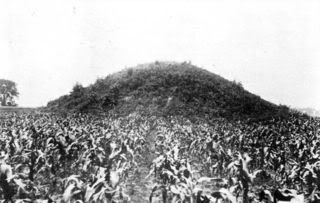
Adena sites include large earthworks in which ridges of earth are thrown up in circles, squares, pentagons, and sometimes irregular shapes. These can be as large as 328 feet in diameter. One of the most characteristic Adena earthworks is the sacred circle or sacred enclosure. While most of these enclosures are circular, they were also constructed in square, rectangular, elliptical, crescentic, panduriform, or hexagonal forms.
The most famous Adena mound is the Serpent Mound located on Brush Creek near Peebles, Ohio. While the distance from the snake’s head to its tail is about 800 feet, the curving snake itself is 1,300 linear feet. The earthwork forming this effigy was more than four feet high and about 20 feet in width. The mouth of the snake is wide open. Within the mouth is an oval-shaped object. The snake’s tail is wound into a triple coil. Some people feel that the object in the snake’s mouth represents the sun, since there is a Native American legend that the sun was once swallowed by a snake.
The Adena mounds contain many graves and the Adena seem to have had an almost obsessive preoccupation with honoring the dead. Adena people intentionally built their burial mounds away from their residences and at the boundaries of neighboring communities. They would return to the same mounds year after year to bury their dead and to pay homage to their ancestors.
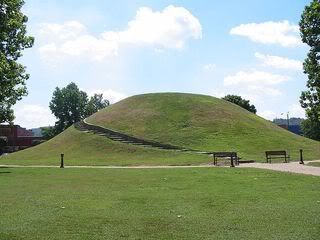
The Adena people built circular houses which ranged from 18 to 60 feet in diameter. The posts for the house walls were angled outward so that water did pool at the base of the walls. The roofs were cone-shaped and covered with bark. In many cases, the central portion of the house would be left without a roof forming an open central courtyard.
Adena material culture includes stone and bone tools, copper beads, and distinctive tubular pipes. They also carved stone tablets with intricate zoomorphic designs or curvilinear designs which were buried with the dead. The carvings were done in deep relief. These tablets were usually 4 or 5 inches by 3 or 4 inches and about a half inch think. Traces of pigment have been found on some of these stones: they may have been used to stamp designs upon some flat surface, perhaps bark cloth or deerskin. Some archaeologists have suggested that the designs stamped on skin could have been used as outlines for tattoos.
The Adena people also fashioned bracelets from copper. The bracelets were usually made from a nearly circular rod which was then bent into an elliptical form with its free ends nearly touching. The bracelets were made from a single nugget of native copper. To make the bracelet, the copper nugget was hammered into a thin sheet and then rolled into a cylinder. This cylinder was then bent to form the bracelet. In addition to copper bracelets, the Adena people also made copper rings in a similar fashion.
Adena people used the fine-grained siltstone which is found in the area for making pipes. Siltstone was an excellent material for making pipes since it was easily drilled and carved. It also had a nice sheen when polished. They made both tubular pipes and platform pipes. The platform pipes often have a sculpture, usually an animal, at one end.
While the Adena people hunted a variety of game animals, they also gathered and cultivated a number of plants including sunflower, marsh elder, goosefoot, maygrass, pigweed, squash, and barley.
Adena people had cranial deformation caused by the use of the cradleboard during infancy. On the average, Adena males were 5’6″ tall and the females were 5’2 ½” tall
Archaeologists have documented more than 500 Adena sites in a geographic area from Ohio to the Atlantic coast. About 200 BCE, the Hopewell culture began to replace the Adena culture.

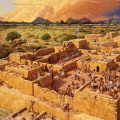
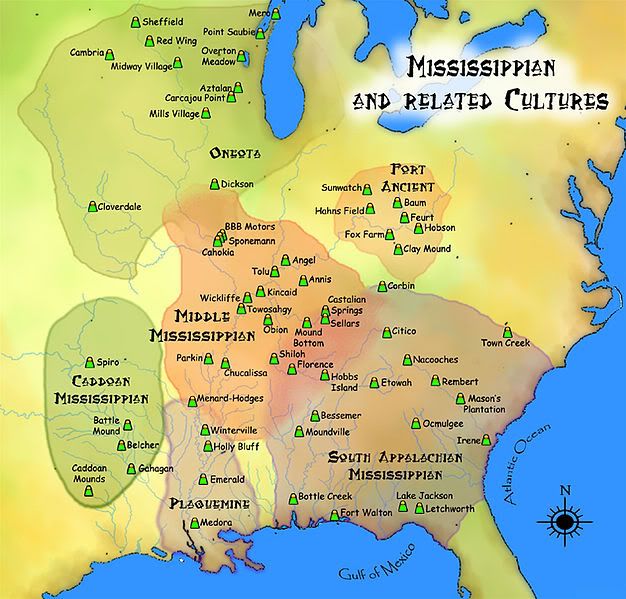
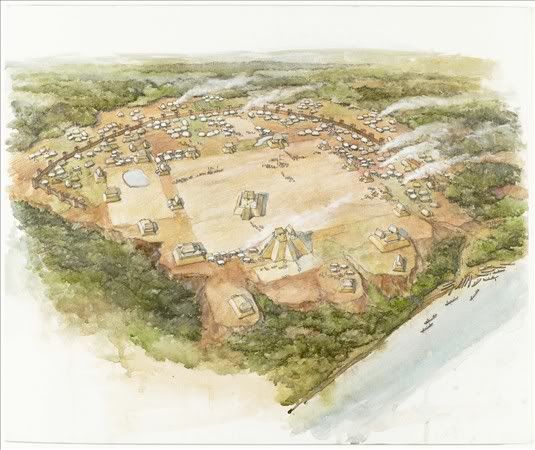
Leave a Reply